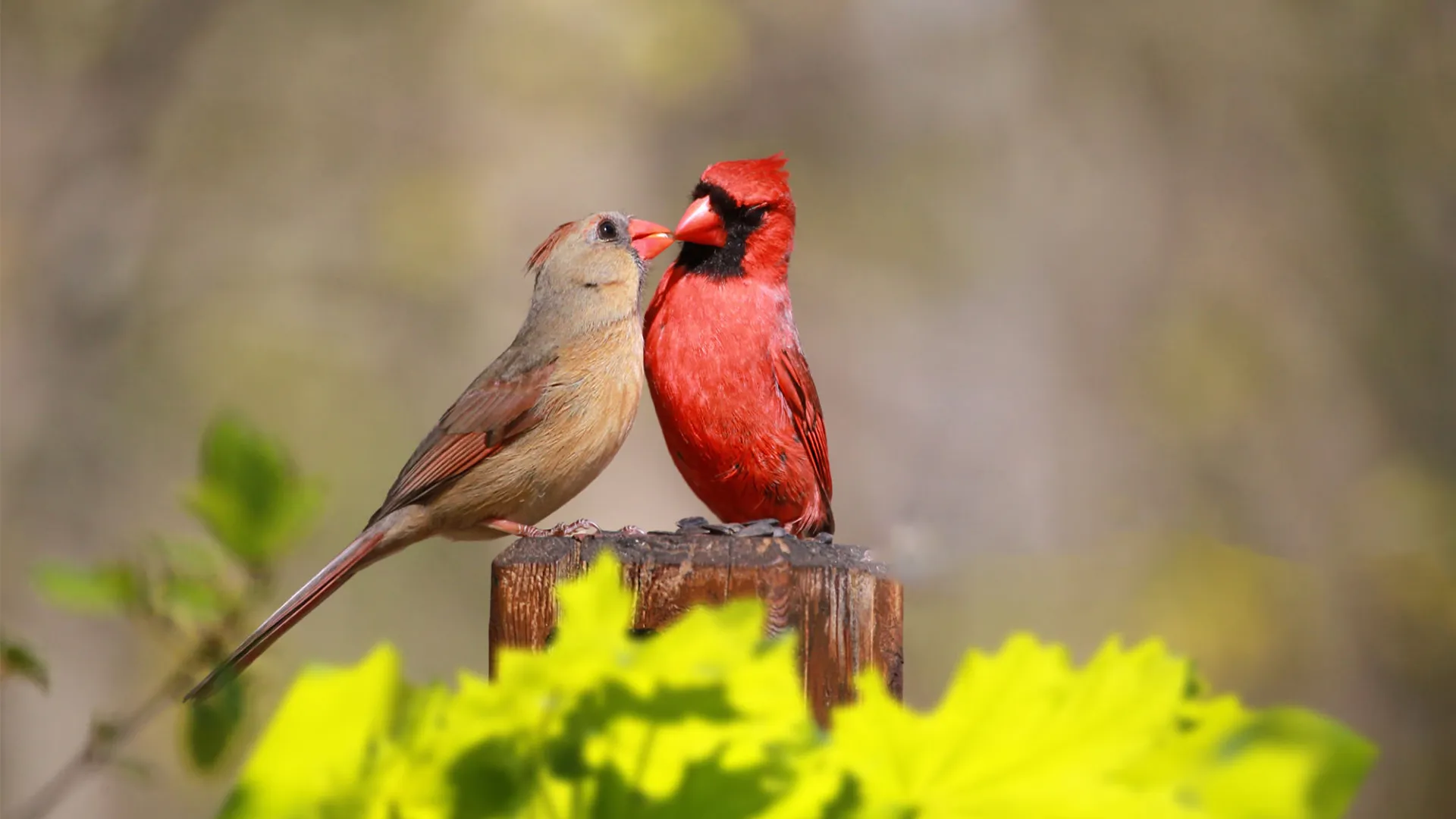The Charm of Texas Red Birds
When you think of red birds, images of brilliant hues and lively songs come to mind. Texas is home to several species of red birds that enchant anyone who spots them. These birds are not only beautiful but also play important roles in their ecosystems. From the vibrant Northern Cardinal to the majestic Painted Bunting, Texas offers a rich palette of red bird species for bird lovers to admire.
The Northern Cardinal
The Northern Cardinal is perhaps the most famous red bird in Texas. With its bright red feathers and distinctive crest, this bird is hard to miss. The male Northern Cardinal is known for its vivid red plumage, while the female has a more subdued, but still beautiful, brownish-red color. These birds are year-round residents in Texas, making them a familiar sight in gardens and woodlands.
Northern Cardinals are not just pretty faces; they have interesting behaviors too. They are known for their sweet, melodious songs that fill the air with a cheerful melody. Cardinals are also known to be quite territorial, with males using their songs to defend their territory and attract mates.
The Painted Bunting
Another spectacular red bird found in Texas is the Painted Bunting. These birds are often described as one of the most colorful birds in North America. The male Painted Bunting is adorned with a brilliant mix of red, blue, and green feathers. When they fly, their vibrant colors create a dazzling display against the backdrop of Texas skies.
Painted Buntings are migratory birds, arriving in Texas during the spring and summer months. They prefer habitats like open woods and shrubby areas, where they can find the insects and seeds they love to eat. Their bright colors and lively behavior make them a favorite among bird watchers.
The Summer Tanager
The Summer Tanager is another striking red bird that graces Texas during the warmer months. This bird is known for its bright red plumage and sweet, melodic songs. Unlike the Northern Cardinal and Painted Bunting, which are year-round residents, the Summer Tanager is a migrant, spending its winters in Central and South America before returning to Texas for the breeding season. Also, for more exciting Texas Rangers content, be sure to check out: It’s Texas Time!
Summer Tanagers prefer open woodlands and forest edges, where they can hunt for insects and fruits. Their vibrant red feathers are a beautiful sight against the green foliage of Texas forests.
The Vermilion Flycatcher
The Vermilion Flycatcher is a small but striking red bird that can be spotted in various parts of Texas. The male Vermilion Flycatcher is a vivid red, with a dark brown or black back. These birds are known for their acrobatic flying skills as they catch insects mid-air.
Vermilion Flycatchers are often found in open areas with scattered trees, such as parks and grasslands. Their bright red coloring and energetic behavior make them a delightful bird to watch.
Habitats and Behavior
Each red bird species in Texas has its preferred habitat and unique behaviors. Understanding these can help bird watchers and nature enthusiasts better appreciate these beautiful creatures.
Northern Cardinal Habitats
Northern Cardinals are adaptable birds that thrive in a variety of habitats. They are commonly found in gardens, parks, and wooded areas. Cardinals enjoy areas with dense shrubs and trees, which provide them with shelter and food. They are also known to visit bird feeders, making them a popular guest in backyards.
Cardinals are often seen in pairs, especially during the breeding season. The male sings to attract a mate and to defend his territory from other males. This bird’s song is not only beautiful but also serves an important role in communication.
Painted Bunting Habitats
Painted Buntings prefer habitats that offer a mix of open spaces and dense vegetation. They are often found in shrubby areas, edges of forests, and around lakes. These birds need access to water and insects, which are a significant part of their diet.
During migration, Painted Buntings stop in areas where they can find plenty of food and suitable nesting sites. Their colorful plumage is not only eye-catching but also helps them blend into the vibrant landscapes they inhabit.
Summer Tanager Habitats
Summer Tanagers are found in open woodlands and forest edges. They prefer habitats with a mix of trees and open areas where they can hunt for insects. These birds are often seen flitting through the branches, searching for food.
Summer Tanagers are migratory birds, traveling long distances between their wintering grounds in Central and South America and their breeding grounds in Texas. Their migration patterns are influenced by seasonal changes and availability of food.
Vermilion Flycatcher Habitats
Vermilion Flycatchers are often seen in open areas with scattered trees, such as parks, golf courses, and grassy fields. They prefer habitats where they can easily spot and catch insects. These birds are highly active and are known for their energetic flight patterns.
The bright red plumage of the male Vermilion Flycatcher makes it a striking presence in its habitat. They are also known to be territorial, defending their space from other flycatchers and birds.
Attracting Red Birds to Your Yard
If you’re eager to see these beautiful red birds up close, there are several ways you can attract them to your yard. Here are some tips to create a bird-friendly environment that will encourage these stunning creatures to visit.
Providing Food
Red birds, like many other birds, are attracted to food sources. You can set up bird feeders with seeds that these birds love. Northern Cardinals, for example, enjoy sunflower seeds and safflower seeds. Painted Buntings and Summer Tanagers are attracted to seeds and insects, so offering a variety of foods can help.
Offering Water
Water is an essential resource for birds, especially in the hot Texas climate. Providing a birdbath or a small pond in your yard can attract red birds and other wildlife. Make sure to keep the water clean and fresh, as birds are sensitive to dirty or stagnant water.
Creating Shelter
Red birds need safe places to rest and nest. Planting shrubs and trees in your yard can offer them the shelter they need. Dense vegetation provides cover from predators and harsh weather conditions. Providing nesting boxes can also encourage birds to stay and breed in your area.
Using Native Plants
Planting native Texas plants can attract red birds and other wildlife. Native plants provide natural food sources and habitats for birds. For example, Texas native plants like Texas Sage and Coral Honeysuckle can attract insects and offer shelter for birds.
Observing and Enjoying Red Birds
Bird watching is a wonderful way to connect with nature and enjoy the beauty of red birds. Here are some tips to enhance your bird-watching experience.
Choosing the Right Time
Red birds can be seen at various times of the day, but early morning and late afternoon are often the best times to spot them. During these times, birds are more active as they search for food and prepare for the day or settle in for the night.
Using Binoculars
A good pair of binoculars can greatly enhance your bird-watching experience. Binoculars allow you to get a closer look at the birds without disturbing them. Look for binoculars with a magnification of at least 8x, which provides a clear view of distant birds.
Keeping a Bird Journal
Keeping a bird journal is a fun way to track the red birds you see. Note the species, their behaviors, and any interesting observations. Over time, you can build a personal record of the birds in your area and their seasonal patterns.
Joining Bird-Watching Groups
Joining bird-watching groups or clubs can be a great way to learn more about red birds and connect with other enthusiasts. Many groups organize bird-watching events and provide resources to help you identify and understand different species.
Conclusion
Exploring the red birds of Texas is a colorful and rewarding adventure. From the vibrant Northern Cardinal to the dazzling Painted Bunting, Texas offers a diverse range of red bird species that captivate and inspire. By understanding their habitats, behaviors, and how to attract them, you can enjoy these beautiful birds up close.





